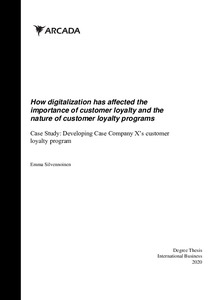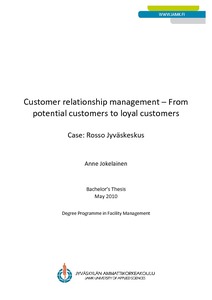Enhancing Customer Service in Commercial Banks of Bangladesh : a data-driven approach through customer feedback analysis
Islam, Md Zahidul (2025)
Islam, Md Zahidul
2025
Julkaisun pysyvä osoite on
https://urn.fi/URN:NBN:fi:amk-2025061022131
https://urn.fi/URN:NBN:fi:amk-2025061022131
Tiivistelmä
Customer satisfaction in commercial banks of Bangladesh is increasingly influenced by both digital platforms and in-branch services. However, many banks struggle to meet growing customer expectations. This research investigates how customer service experiences align with expectations and how feedback practices contribute to service improvement. The study aims to identify satisfaction levels, service gaps, and improvement priorities across traditional and digital channels.
The research is grounded in the SERVQUAL model and Expectation Disconfirmation Theory. Key concepts include service quality, customer satisfaction, expectation gaps, and feedback responsiveness. The study follows a quantitative approach, using a structured questionnaire. Data were collected from 120 customers using convenience sampling. Descriptive statistics, correlation, and regression analysis were performed using JAMOVI. Thematic analysis supported open-ended responses.
Findings reveal that digital platforms perform better than in-branch services in terms of reliability and user satisfaction. However, customers still value personal interaction. Major gaps exist in complaint handling and branch service speed. Feedback is seen as important but often lacks visible results. The study concludes that a hybrid service approach, active feedback use, and improved staff training are essential. These insights can guide bank managers and policymakers in planning customer-focused reforms across banking services in Bangladesh.
The research is grounded in the SERVQUAL model and Expectation Disconfirmation Theory. Key concepts include service quality, customer satisfaction, expectation gaps, and feedback responsiveness. The study follows a quantitative approach, using a structured questionnaire. Data were collected from 120 customers using convenience sampling. Descriptive statistics, correlation, and regression analysis were performed using JAMOVI. Thematic analysis supported open-ended responses.
Findings reveal that digital platforms perform better than in-branch services in terms of reliability and user satisfaction. However, customers still value personal interaction. Major gaps exist in complaint handling and branch service speed. Feedback is seen as important but often lacks visible results. The study concludes that a hybrid service approach, active feedback use, and improved staff training are essential. These insights can guide bank managers and policymakers in planning customer-focused reforms across banking services in Bangladesh.
Kokoelmat
Samankaltainen aineisto
Näytetään aineisto, joilla on samankaltaisia nimekkeitä, tekijöitä tai asiasanoja.
-
How digitalization has affected the importance of customer loyalty and the nature of customer loyalty programs : Case Study: Developing Case Company X's customer loyalty program
Silvennoinen, Emma (2020)In recent years, digitalization has introduced significant changes and great challenges in the retail industry, making it one of the biggest game changers in the field of customer loyalty marketing. Therefore, the aim of ... -
Customer relationship management - from potential customers to loyal customers : case: Rosso Jyväskeskus
Jokelainen, Anne (Jyväskylän ammattikorkeakoulu, 2010)This thesis was commissioned by the restaurant manager of Rosso Jyväskeskus, Ms. Tuula Aberni. The aim of the customer survey was to find out how committed the customers are to Rosso Jyväskeskus and how to develop the loyal ... -
Customer-orientated Profitable Marketing: Turning Customer Knowledge into Customer-driven Marketing Strategy : an analytical framework
Do, An (2020)The purpose of this paper was to develop a fully-constructed analytical framework that helps businesses design a customer-orientated marketing strategy. The study looks into the dynamics between customer knowledge and the ...



